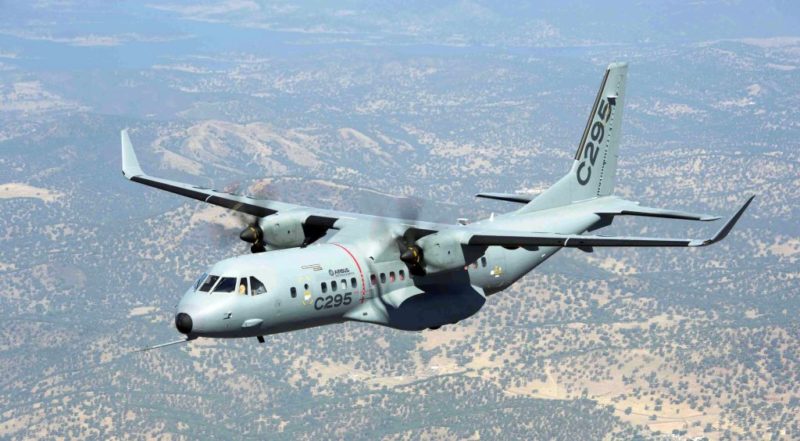Gilat Awarded a Clean Sky 2 Call to Develop Electronically Steerable Antenna

The C295 aircraft. Photo: Airbus.
Gilat announced a joint development project with Airbus for an Electronically Steerable Antenna (ESA) for In-Flight Connectivity (IFC) funded by Clean Sky 2 Joint Undertaking (CS2JU), as part of the European Commission’s Horizon 2020 program. The fully embedded airborne antenna technology will be demonstrated in-flight on an Airbus technology demonstrator based on the C295 aircraft to support the Clean Sky 2 objective for more efficient and greener transport.
Gilat was selected to develop a Ka-band ESA terminal based on its Phased Array Antenna (PAA) expertise. The antenna array will be embedded into the wing structure of the airframe including the amplification and radiating elements. The development will include the design, prototyping, manufacturing, and testing on ground and in-flight of the airborne terminal in collaboration with Airbus.
Gilat will develop the embedded antenna in coordination with Airbus to demonstrate a full satellite communication airborne link without impact on the aircraft performance. The Gilat ESA aero terminal will be installed into the Airbus technology demonstrator for in-flight validation tests planned to be carried out in Seville, Spain, using a Ka-satellite with European Union (EU) coverage.
The phased array technology of the ESA IFC antenna allows high integration and embedding of the antenna into the airframe structure, more specifically, as part of the panel fairing, which connects the aircraft wing to the fuselage. The original panels will be replaced by new composite structures with embedded phased array antenna elements, thus eliminating any protruding components. This solution adds the IFC capabilities without affecting aircraft performance and maneuverability by avoiding aerodynamic drag and reducing fuel consumption. The embedded antenna will contribute to the reduction of carbon dioxide emissions, thus supporting one of the key societal challenges of smart, green and integrated transport.